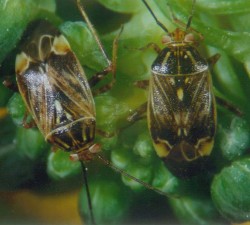EPA OKs Dow’s Registration for New AI Sulfoxaflor

The U.S. Environmental Protection Agency (EPA) said it granted unconditional registrations for the new active ingredient sulfoxaflor, formulated as a manufacturing use product and two end-use products for use in production agriculture.
Dow AgroSciences will market sulfoxaflor in the United States under the Transform and Closer brands.
The U.S. registration, and the recent Canadian registration, are the result of a Global Joint Review which also includes Australia. Australian sulfoxaflor registration is expected by third quarter 2013. South Korea, Panama, Vietnam, Indonesia, and Guatemala have already registered sulfoxaflor and additional global registrations are expected in the near future, according to Dow.
“Sulfoxaflor belongs to a novel chemical class called sulfoximines invented by Dow AgroSciences and offers extremely effective control of many important sap-feeding insect pests,” Dow said.
The EPA is granting the use of sulfoxaflor on barley, bulb vegetables, canola, citrus, cotton, cucurbit vegetables, fruiting vegetables, leafy vegetables, low-growing berries, okra, ornamentals (herbaceous and woody), pistachio, pome fruits, root and tuber vegetables, small vine climbing fruit (except fuzzy kiwifruit), soybean, stone fruit, succulent, edible podded and dry beans, tree nuts, triticale, turfgrass, watercress and wheat.
According to EPA, one area of focus in the review involved pollinator health, and the final label includes robust terms for protecting pollinators, it added. The EPA performed its data evaluation and assessments in collaboration with its counterpart agencies in Canada and Australia. Scientists from the three authorities reviewed over 400 studies and peer reviewed each other’s work.
According to EPA, the registration will provide growers with a new pest management tool for use on piercing/sucking insects. “Sulfoxaflor has been used under an emergency clearance on cotton in Arkansas, Mississippi, Tennessee and Louisiana to control the tarnished plant bug, an insect that has developed resistance to alternative registered pesticides.”





